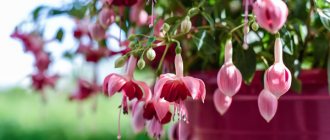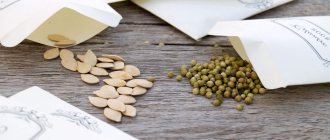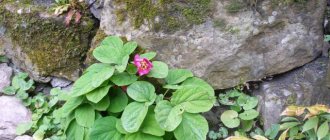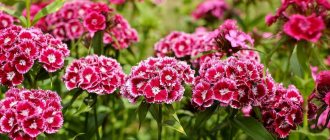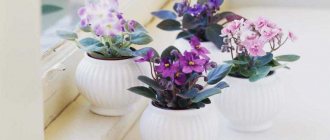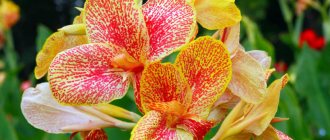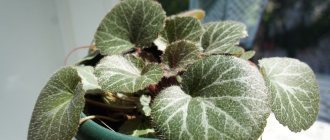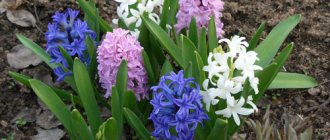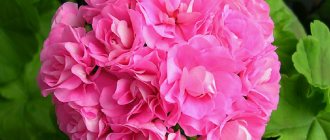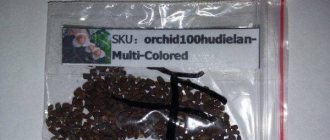The daisy is a flower that does not claim the title of star of garden design, but is quite content with the role of an extra. But, when planted in a group, blooming daisies set the tone for the entire geometry of the backyard landscape, emphasizing the boundaries of flower beds and walking areas, spreading like carpets along garden paths, creating a colorful foreground in front of high flower beds and maintaining clear boundaries of green lawns. How to plant and grow daisies, choose the right variety and make them bloom amicably and abundantly - all this requires certain knowledge and a competent approach, so we will dwell in more detail on the rules of agricultural technology for these modest, but infinitely cute flowering inhabitants of our gardens.
General description with photo
Daisies are a low herbaceous plant from the Asteraceae or Asteraceae family. They have a small compact rhizome and a leafless peduncle stem growing from a dense basal rosette. The leaves of the rosette are spatulate-elongated, with a crenate edge. Each peduncle forms only one flower head with a conical receptacle. The inflorescences of the original species are bisexual, simple, species daisies look like yellow or white multi-petaled daisies. Decorative varieties can differ greatly from each other in size, doubleness of inflorescences and, of course, their color.
According to the life cycle, they are divided into annual and perennial, however, very often gardeners practice two-year cultivation of daisies, when in the first year compact green rosettes without flowers appear from the seeds, and in the second year lush, abundant flowering occurs.
If the buds are not removed as they wither (and this is not so easy to do, given that daisies are not planted individually, but in a continuous dense carpet), then the plant will actively self-sow. But this will not make the process of planting and growing varietal daisies easier, since the most ordinary flowers will grow, having lost their valuable varietal characteristics.
Ripe fruits are a flattened achene without a tuft.
Varieties
Description of varieties
For decorative cultivation, out of 80 known, only 20 are used, which are conventionally divided into seven groups. Each group may include both early and late species; the size of the flower in one group may be different.
The colors of daisies are mainly divided into the following:
- white
- pink
- red
- salmon
White and red daisies
At the end of the 17th century, two-color varieties adorned the gardens and parks of many European countries; the very first was bred and planted in the parks of France ; the upper petals were red, while the lower ones remained snow-white.
This country is home to small button pom-poms, which were especially popular in Russia. Very soon, Italy presented lancet varieties with tubular baskets of inflorescences for public viewing.
If you do not care for daisies, do not thin them out, and do not feed them, they will quickly lose all their decorative characteristics and begin to bloom with ordinary simple flowers, very similar to daisies.
The distinctive features of the variety can be not only flowers, some of them are distinguished by unusual foliage:
- "Aucubaefolia" is recognized by yellow splashes on the leaves
- 'Shrewley Gold' has a unique gold pattern on the foliage along the veins
Such varieties will please the eye along with the others in spring and autumn, attracting more attention due to their characteristics.
Among the wide variety of varieties and species, there are the most popular ones, followed by a more detailed description of them:
Growing daisies from seeds
Sowing with personally collected seeds is justified only for species varieties. Ornamental varieties bred by breeders can be planted with seeds for seedlings only when they were purchased from the manufacturer. Sowing daisies can be done both as seedlings and in open ground.
Growing through seedlings
The seedling method is preferable from the point of view that in this case it will be possible to obtain flowering already in the current season. It all depends on when to plant the seeds. It is recommended to sow in February, or at least in early March, immediately using individual planting containers. The root system of daisies develops in breadth, which leads to injury to the seedlings during transplantation. Sowing is done in nutritious, structured, well-moistened soil without deepening. It is permissible to sprinkle a thin layer of sand on top. After this, the seeds need to be pressed well into the soil and the container covered with plastic wrap. Before the first seedlings appear, the dishes should be placed in a warm and well-lit place, but not in direct sunlight to avoid the formation of excessive condensation.
After germination, and this can happen after 1-2 weeks, you need to move the containers to a cool, but no less bright place. Winter daylight cannot satisfy the seedlings' need for lighting, so at first it will be necessary to supplement it with a lamp.
When to plant seedlings in open ground?
Daisies are light-loving plants that do not tolerate sudden soil frosts, especially at a young age. Therefore, seedlings are planted in open ground no earlier than the end of May or even the beginning of June.
Picking
The plant does not tolerate root injury well at a young age, so it is advisable to do without additional planting of seedlings in containers. It is better to sow the seeds with a quantitative reserve, and then carefully cut off the excess sprouts at the root with scissors. Seedlings are planted in open ground by transfer, and if grown in peat pots, together with them. The distance between neighboring bushes should be 15-20 cm, taking into account the growth of the root rosette.
Planting seeds in open ground
The earliest date for direct sowing of seeds in open ground is the end of May. It should be understood that this year it is unlikely that full flowering will be achieved, since all efforts will be directed towards the formation of the root system and leaf rosette. Seeds in open ground will need to be sprinkled with a thin layer of sand to protect them from birds and wind. Everything is covered with a film on top, which is lifted daily for ventilation. It is convenient to plant the seeds in rows. As soon as the density of seedlings can be assessed, excess plants are removed using scissors.
Do not uproot excess seedlings from the ground; this will disrupt the root system of the remaining seedlings and slow down their development.
Useful video
In addition, watch a visual video about sowing daisy seeds for seedlings:
The daisy is a real favorite of summer residents and designers because of its unpretentiousness, variety of shapes and original beauty. Combination with other colors helps to create unique, stunning designs. The plant is used to add to dishes and drinks, and also as a medicine.
Rate the article, share the material with friends on social networks, and express your opinion in the discussion below!
Selecting a location
The place for planting daisies is selected primarily based on their decorative purpose, so you should be prepared for the fact that the composition of the soil in the selected location will have to be optimized for this crop. The question is simplified by the fact that daisies do not make great demands on the soil. But they feel best on light loam. Water should not stagnate in this place; in lowlands, you need to take care in advance of its high-quality and timely outflow.
As for lighting, daisies are unpretentious here too. They are ready to grow in an open area with sufficient moisture, and in a little passing shade. Perhaps, the only difference will be in the height of the peduncles; in the first case, they will be shorter, and the leaf rosettes will be denser.
Sowing seedlings
It is very important to choose the right substrate for sowing daisies so that the seedlings grow strong and healthy. Any container can be used. The main thing is that it has drainage holes.
Daisies tolerate replanting well, but the seedlings of the crop may not need to be planted if the seeds are sown infrequently. If desired, the plants are planted in separate containers when two true leaves appear on the seedlings. Usually daisies peak if they were sown early - in winter.
The soil for sowing must be fertile, loose and permeable. You can take a purchased universal flower substrate. The substrate, even though it is purchased, should be calcined for half an hour in the oven to disinfect it. You can also spill the soil with a solution of Fitosporin.
No special preparation of daisy planting material is required. Seeds are sown immediately from the bag into the prepared substrate.
To sow, first fill the container with soil, level it and irrigate it with a spray bottle. Seeds are sown evenly over the surface of the ground and not covered. You can sprinkle the seeds with thin sand in a layer of up to 1 mm, but no more. The container is covered with film and placed in a warm and well-lit room, but not in the sun. The minimum temperature in the room should be +18 degrees.
Caring for Daisies
It’s not difficult to grow these flowers, but you won’t be able to forget about them for a long time. The flowerbed must be weeded regularly, watered in a timely manner and fed occasionally. You need to be careful with loosening the soil; shallow roots are easily damaged. For the same reason, you cannot delay watering, otherwise the top layer of soil will dry out and the daisies will suffer. With a lack of water, the inflorescences begin to shrink, and decorative terry varieties lose their doubleness. A layer of mulch will help partially solve this problem; the soil will release less moisture and dry out more slowly in the heat.
Mulching provides another advantage - mulch covers protruding roots, which the crop has a natural tendency to do.
Feeding
Daisies are among the plants for which feeding is the most important care item. With unobtrusive “service”, their appearance will not differ much from their wild counterparts growing in nature (in Russia - Crimea, Caucasus). If you provide them with a high level of agricultural background, they will be able to fully reveal their decorative potential. In early spring, when planting daisies or on an existing flowerbed, add a balanced mineral composition for flowering open-ground crops. After waiting for the start of budding, you need to re-feed with a composition with a reduced percentage of nitrogen inclusion or with its complete absence.
Removing faded buds can not only prolong flowering, but also cause a second wave. To do this, you can walk through a flower bed with daisies with a lawnmower, cutting off all the flower stalks at the end of flowering. Very soon there will be a new flowering, and it will continue until frost.
Pests and diseases
Daisy is susceptible to fungal diseases: rust, rot, powdery mildew. The infection develops at high humidity and excess nitrogen fertilizers. For treatment and prevention, systemic fungicides are used: Fitosporin, Bordeaux mixture, Skor, HOM.
Insects that can threaten daisies include thrips and spider mites. Aktara and Iskra are used against them.
During wintering of daisies, mice and moles can feast on the roots. To protect plants, ultrasonic repellers are used; foam sponges soaked in tar and ichthyol ointment are buried in the flower garden.
Possible problems
Inexperienced gardeners may encounter the following difficulties:
- flowers become smaller (little moisture in the soil, the bush is old);
- leaves are growing actively, but there are no buds (excess nitrogen in the soil, not enough light).
If you comply with the requirements for agricultural technology, there will be no problems with daisies.
Vegetative propagation methods
You can plant daisies not only by the generative method (seeds), but also by cuttings and dividing the bush. This primarily applies to varietal varieties in order to preserve their visual attractiveness.
Cuttings
The best time for cutting is the last week of August or the first of September (dates may vary depending on the weather). To do this, use a sharp knife or garden pruning shears; you need to cut off the leafy side stems. They are planted immediately on a training bed with a loose nutrient substrate. You can place them in a container with water. After just a couple of weeks, the green cuttings should produce new roots. It is better to plant them in a permanent place immediately after this. Next year they will produce full blooms.
Dividing the bush
It is worth knowing that after dividing the bush, the plant does not look as neat, lush and beautiful as one grown from purchased high-quality seeds. But you will have to resort to it from time to time for reasons that will be described below. The timing is the same as for cutting cuttings, but spring division is also acceptable. An adult, full-fledged bush is divided into 4-6 parts. First, all flower stalks and leaves without petioles are pinched off. The roots of the dug out bush are shortened to 5-8 cm. This will make rooting easier.
Divisions of adult daisies easily take root even with virtually no roots at all, producing new ones from the base of the petioles, so there is no need to try to preserve their entire root system.
Planting seedlings in a flower bed
In the central zone, daisy seedlings are planted in the garden in late May-early June. The place should be sunny or in light partial shade, protected from the wind. The area is dug up, weed roots are removed and leveled.
The seedlings are carefully removed from the containers and planted in small holes in increments of 10-15 cm. The planted plants are watered abundantly, the soil around them is compacted and must be mulched.
Collecting seeds
Daisy seeds do not give away all at once, but as they ripen during a long flowering period, so if you want to collect all the seed material, you need to do this in stages every 5-7 days. It is necessary to carefully cut off the already wilted but not yet scattered seeds of the inflorescence, shake them out onto paper and lay them out on it to dry. For storage, paper envelopes or bags are also used, which are left in a dry and dark place for the winter.
Before harvesting, do not water the daisies; jets of water can easily wash away the ripe seeds.
Originator of Kieft Seed (Kieft speed)
The selection is represented by the original variety:
"Bellissima" (belissima)
"Bellissima" (belissima)
- It is characterized by pompom-type flowers with a diameter of each up to 5 cm. The basket is held at a height of more than 12 cm by a dense elastic stem. The whole range of colors is popular: red, pink, white, and two-color types.
- The first flowering occurs in the year of sowing or transplanting plants.
- An important point will be the application of fertilizers; without them, this variety will not be able to produce full flowering.
- Some species may have a pronounced yellow core; in most trunks it is not visible behind the tightly collected tubular petals.
Transfer
This point of agricultural technology applies only to perennial varieties. The need for their periodic transplantation is dictated by the tendency of the culture to degenerate. At first, the planting pleases with the beauty of large double flowers, but after a few years in the same place there is no trace of its former decorativeness. As soon as the clump begins to grow, the flowers become smaller and their double quality disappears. And, if other flowering crops require rejuvenating transplantation no earlier than after 5-6 years, then daisies need this much more often. If it is not possible to replant and divide the bush, then you should at least remove the excess bushes. This is quite a troublesome, but necessary care item.
Application
Daisies bloom very early, in late March - early April, so many people plant these spring flowers in their gardens, flower beds, pots and balcony boxes. Terraces and balconies should be decorated in early spring. Daisies also look great at home as unusual flowers in pots.
In the garden
The garden daisy has double or semi-double flowers, a longer stem than the perennial, and can grow up to 20 cm in height. The colors are extremely varied: from white to various shades of pink, red and even burgundy. The flower remains on the plant for quite a long time, until June. Some varieties repeat flowering in late autumn.
Daisy is ideal for group plantings and combines well with other plants. It can be successfully used along the edges of lawns or flower beds. It can also be combined with other small spring flowers such as dwarf daffodils and forget-me-nots.
An interesting suggestion is to add daisy seeds to your lawn mixture to create a real meadow around your home. The flowers do not interfere with mowing the grass - they grow back well.
At home and on the balcony
This flower is ideal for balconies and terraces. Daisies look great as potted flowers planted at home. They are not particularly demanding, so they can grow well in boxes and containers. The potted daisy is a very elegant plant, tolerant of adverse conditions, and very easy and pleasant to care for.
In order for daisies to grow satisfactorily at home, it is important to water them regularly and remove rejected flowers. To decorate your home, the flower should be planted in colorful pots. This will bring real spring to your home.
This flower can be planted on the balcony as early as March. Flowers look good in groups. They can be used to create multi-color compositions. They look very good when combined with other spring flowers that can tolerate cold temperatures, such as pansies.
A flower planted in a container will take several weeks to bloom. After the plant has finished flowering, plant it in the garden where it will produce seeds and spread them into the ground. Next year the young plants will bloom.
